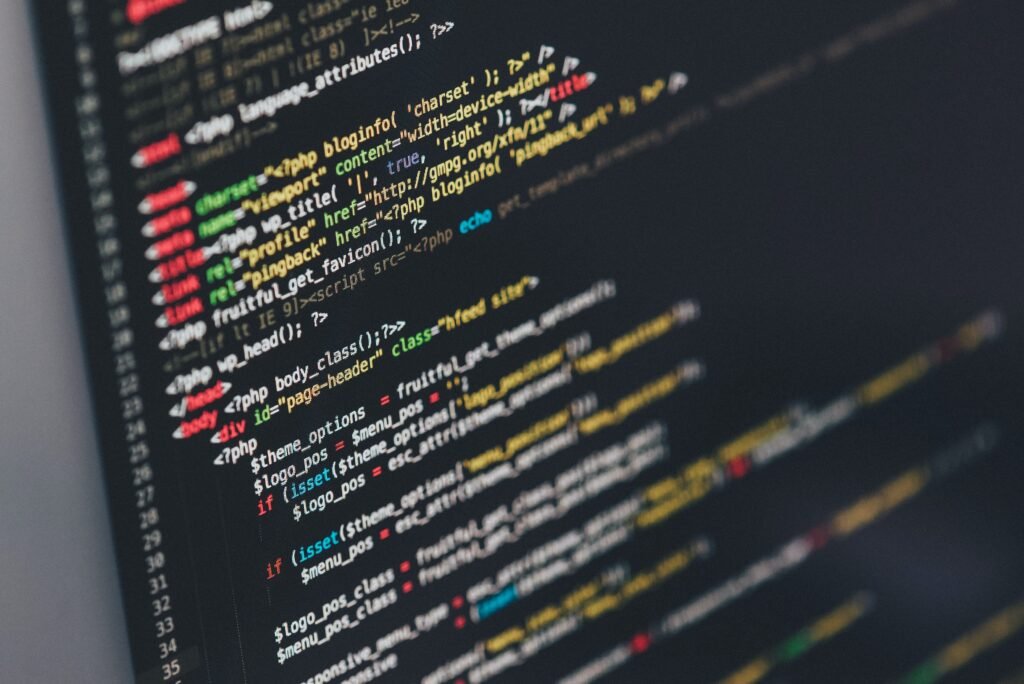Have you ever wondered about the distinction between two buzzwords in the tech world: artificial intelligence (AI) and machine learning (ML)? While they are often used interchangeably, there is a subtle yet crucial difference between the two. Artificial intelligence refers to the simulation of human intelligence in machines, enabling them to perform tasks that would typically require human intelligence. On the other hand, machine learning is a subset of AI that focuses on the ability of machines to learn from and improve upon their performance without being explicitly programmed. Understanding these nuances is essential as we delve into the realm of AI and ML, uncovering their potential and the impact they have on our lives.

Definition of Artificial Intelligence
The concept of AI
Artificial Intelligence (AI) refers to the development of intelligent machines capable of performing tasks that typically require human intelligence. These tasks include recognizing speech, making decisions, solving problems, and learning. The concept of AI aims to replicate human intelligence and simulate human reasoning, understanding, and knowledge processing in machines.
AI in everyday life
AI has become an integral part of our daily lives, often without us even realizing it. From voice assistants like Siri and Alexa that understand and respond to our commands, to personalized recommendations on streaming platforms, AI is constantly at work. It powers the autonomous features in vehicles and is used in healthcare to analyze vast amounts of data for better diagnostics and treatment plans. AI is also utilized in financial systems to detect fraudulent transactions and optimize investments. In essence, AI has found its way into various aspects of our lives, making our experiences more convenient and efficient.
Definition of Machine Learning
Introduction to machine learning
Machine Learning (ML) is a subset of AI that focuses on the development of algorithms and statistical models that enable machines to automatically learn from data and perform specific tasks without explicit programming. It revolves around the idea of providing machines with the ability to learn and improve from experience.
Applications of machine learning
The applications of machine learning are vast and diverse. ML algorithms are used in image recognition to identify and classify objects within images. They enable natural language processing, allowing machines to understand and respond to human language. In the field of medicine, machine learning is used for disease prediction and drug discovery. Machine learning also plays a crucial role in fields such as finance, marketing, and cybersecurity, where it enables data analysis and predictive modeling to make informed decisions and identify patterns.
Goal
AI: Replicate human intelligence
The goal of AI is to replicate human intelligence in machines. It seeks to develop systems that possess the ability to reason, understand natural language, learn from experience, and exhibit creativity. The aim is to create machines that not only perform specific tasks but also demonstrate a level of cognition and decision-making similar to that of human beings.
Machine Learning: Develop algorithms to perform tasks
The goal of machine learning is to develop algorithms and models that can automatically learn and improve from experience without being explicitly programmed. ML focuses on training machines to perform specific tasks efficiently and accurately. The objective is to enable machines to make predictions or decisions based on patterns and insights derived from data, leading to improved performance and efficiency in various domains.
Approach
AI: Simulating human intelligence
AI approaches the problem of developing intelligent machines by simulating human intelligence. It involves creating systems that can think, reason, understand natural language, and learn from experience. The emphasis is on replicating human cognitive processes and decision-making capabilities in machines, making them capable of performing complex tasks that typically require human intervention.
Machine Learning: Data-driven approach
The approach taken by machine learning is data-driven. ML algorithms analyze large datasets, looking for patterns and insights that can be used to make predictions or decisions. Instead of being explicitly programmed, machines learn from the data they are exposed to, continuously iteratively improving their performance. The focus is on developing models that can process and interpret data to perform specific tasks efficiently and accurately.

Data Dependency
AI: Requires both structured and unstructured data
AI systems require both structured and unstructured data for training and operation. Structured data refers to data with a defined format, such as databases, spreadsheets, or standardized forms. Unstructured data, on the other hand, includes text documents, images, videos, and audio recordings. AI systems rely on this combination of structured and unstructured data to analyze, understand, and make informed decisions.
Machine Learning: Requires labeled data
Machine learning algorithms require labeled data for training. Labeled data is data that has been tagged or categorized, making it clear what the correct answer or output should be. The labeled data is used to train the machine learning models to recognize patterns and make predictions accurately. During the training process, the models adjust their parameters and iteratively improve their performance based on the provided labeled data.
Capability
AI: Can solve complex and novel problems
AI systems have the capability to solve complex and novel problems. They possess the ability to reason, understand natural language, learn from experience, and exhibit creativity. AI systems excel in domains that involve high levels of uncertainty, ambiguity, and human-like decision-making. This capability allows AI systems to tackle a wide range of challenges, adapting and learning over time to improve their performance.
Machine Learning: Can solve specific tasks
Machine learning algorithms are designed to solve specific tasks efficiently and accurately. They are highly effective in situations where there is ample labeled data available for training. Machine learning models excel at pattern recognition and can make predictions or decisions based on the analyzed data. However, their capability is typically limited to the specific task they are trained for, and they may struggle with novel or complex problems outside their trained domain.

Self-learning
AI: Has the ability to learn from experience and improve performance
AI systems possess the ability to learn from experience and improve their performance over time. They can adapt to changing circumstances, refine their decision-making processes, and acquire new knowledge. By continuously learning and evolving, AI systems become more efficient and effective in solving problems, often surpassing human capabilities in specific domains. This self-learning aspect sets AI apart from traditional programmed systems.
Machine Learning: Focuses on self-improvement through data analysis
Machine learning focuses on self-improvement through data analysis. ML algorithms iteratively analyze large datasets, looking for patterns and insights. As more data is processed, the models adjust their parameters and improve their performance. This iterative process allows machine learning models to continuously learn and adapt to new information, making them more accurate and efficient at performing specific tasks.
Examples
AI: Virtual assistants, chess-playing computers
Examples of AI systems include virtual assistants like Siri and Alexa. These voice-activated AI systems can understand natural language, respond to commands, and perform various tasks. Chess-playing computers are also examples of AI, as they can analyze the game board, simulate possible moves, and make decisions based on strategic calculations. AI-powered recommendation systems used by platforms like Netflix and Amazon are other instances, as they analyze user preferences and behavior to provide personalized recommendations.
Machine Learning: Spam filters, recommendation systems
Machine learning is behind the scenes in many of our everyday technologies. Spam email filters, for instance, utilize machine learning algorithms to analyze and detect patterns in emails, accurately classifying them as spam or legitimate. Recommendation systems used in online platforms, such as those suggesting products or movies based on our preferences, are also powered by machine learning. These systems learn from our previous choices and behaviors, continually improving their recommendations based on new data.
Development Process
AI: Requires extensive programming and expertise
Developing AI systems typically requires extensive programming and expertise. AI projects involve creating complex algorithms, designing architectures for processing and analysis, and implementing machine learning models. AI developers also work on natural language processing, computer vision, and decision-making systems. The nature of AI development often necessitates interdisciplinary collaboration from experts in domains such as computer science, mathematics, and cognitive science.
Machine Learning: Utilizes statistical models and algorithms
The development of machine learning models and algorithms relies on statistical analysis and coding. Machine learning engineers use statistical and mathematical models to analyze data, identify patterns, and make predictions. They apply various algorithms, such as decision trees, neural networks, and support vector machines, to train the models. The process involves selecting appropriate features, preprocessing and transforming data, and tuning the models to achieve optimal performance.
Human Intervention
AI: Less human intervention required
AI systems require less human intervention once they are developed and deployed. They possess the capability to perform tasks independently, often without the need for constant human oversight or guidance. The self-learning aspect of AI enables the systems to continuously improve their performance by learning from experience and adapting to new information. This autonomy allows AI systems to operate efficiently and effectively, reducing the burden on human operators.
Machine Learning: Requires human intervention for training and improvement
Machine learning systems, on the other hand, require human intervention during the training process. Labeled data is needed to train the models, and human experts are responsible for providing this data and ensuring its quality. Additionally, humans need to monitor the performance of machine learning models, adjust parameters, and retrain the models when necessary. Although machine learning models can adapt and improve on their own to some extent, human intervention is essential in the training and improvement stages.




